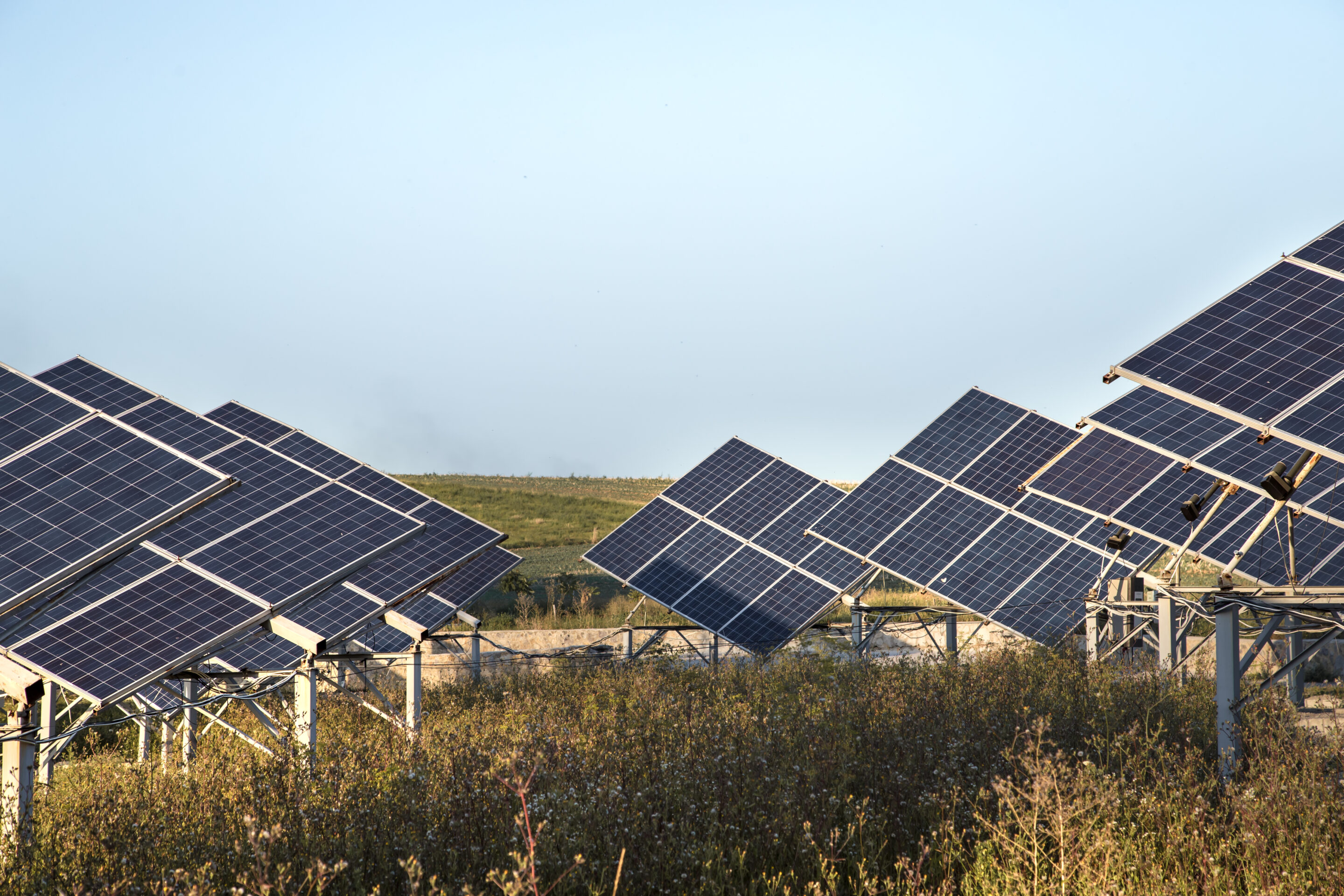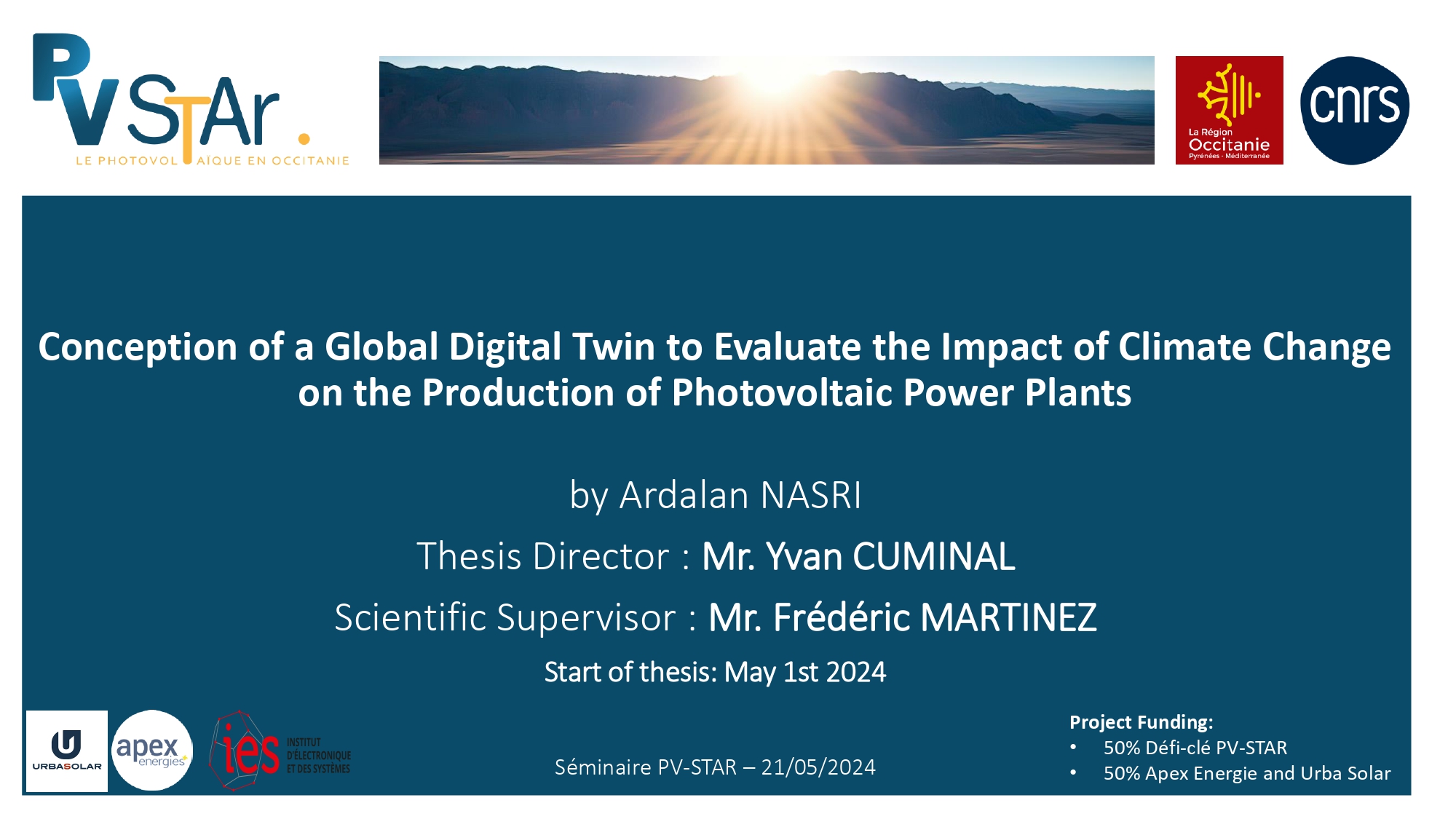Nos recherches, expériences & conceptions


Some studies have already demonstrated that the impact of global warming on photovoltaic (PV) energy production could result in an average reduction in annual output of 15 kWh/kWp by 2100, with potential losses of up to 50 kWh/kWp in the most severely affected regions [1].
Other studies indicate that, on a European scale, the loss of production linked to changes in solar resources should be within the range of (–14% to +2%) by the end of this century compared with estimates made under current climate conditions [2].
In both instances, the predictions are based on climate models combined with electrical models. The latter of which are frequently highly simplified, as they only consider the reduction in yield from photovoltaic panels due to the rise in temperature.
Concurrently, from an economic standpoint, it appears that the profitability margins of current power stations are becoming increasingly slim . A loss of yield of just a few percent could potentially lead to the questioning of the viability of certain installations.
In this context, the objective of the proposed project is to develop a numerical modelling tool (digital twin) that will enable the overall performance of a photovoltaic power plant to be assessed with sufficient accuracy to meet current and future economic and climatic challenges.
In order to achieve this, it is necessary to employ multi-scale modelling techniques, utilising physical models of cells, modules and power electronics.

Ardalan Nasri
Phd Student
Yvan Cuminal (IES)
Supervised by
Frederic Martinez (IES)
Supervised by
Corinne Alonzo (LAAS)
Co-supervision
In progress, more information coming soon.




